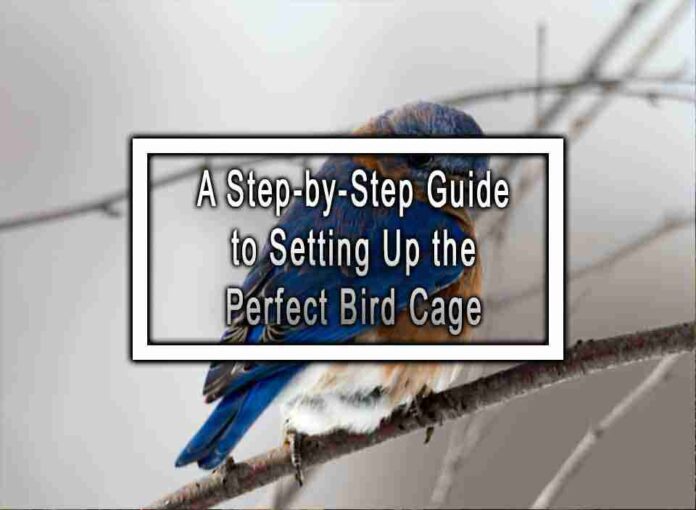Setting up a bird cage requires careful consideration to ensure the comfort, safety, and well-being of your feathered friend. Here’s a step-by-step guide to help you set up the perfect bird cage:
1. Choose the right cage
Select a cage that provides ample space for your bird to move around and stretch its wings. The size of the cage will depend on the species and size of the bird. A general guideline is to choose a cage that allows your bird to fully extend its wings without touching the sides.
2. Locate the cage in a suitable area
Place the bird cage in a quiet, draft-free area of your home. Avoid placing it in direct sunlight or near windows, as extreme temperatures and drafts can be harmful to your bird. Also, avoid placing the cage in areas with high humidity, such as bathrooms or kitchens.

3. Line the cage floor
Line the cage floor with suitable bedding or liner material. Choose materials that are safe for birds and easy to clean. Avoid using newspaper, as the ink can be toxic to birds. Instead, consider using paper liners specifically made for bird cages or cage liners made of safe materials.
4. Provide perches
Birds need perches of different sizes and textures to exercise their feet and maintain their health. Place multiple perches of varying diameters inside the cage. Natural wooden perches are a good choice, as they provide a more comfortable and secure grip for your bird.
5. Include food and water dishes
Provide sturdy food and water dishes that are easy to clean and refill. Place them in a location where they won’t get soiled by droppings. Ensure that the dishes are easily accessible for your bird but not positioned directly below perches to prevent contamination.
6. Add toys and enrichment
Birds need mental and physical stimulation, so include a variety of toys and enrichment items in the cage. Choose toys that are safe for birds and suitable for their size and species. Rotate the toys regularly to keep your bird engaged and prevent boredom.
7. Install a cuttlebone and mineral block
Hang a cuttlebone and mineral block inside the cage. These provide essential minerals and help keep your bird’s beak trimmed and healthy.
8. Ensure proper ventilation
Good airflow is crucial for your bird’s respiratory health. Avoid overcrowding the cage with toys or accessories that may restrict airflow. Regularly clean the cage to prevent the buildup of dust or debris that can affect air quality.
9. Maintain cleanliness
Clean the cage regularly to provide a hygienic environment for your bird. Remove any uneaten food, droppings, or soiled bedding promptly. Wash the dishes and perches regularly using mild soap and water. Avoid using harsh cleaning agents or aerosols near your bird.
10. Provide a safe environment
Ensure that the cage is secure and free from potential hazards. Check for any sharp edges or loose parts that could injure your bird. Keep the cage away from toxic substances, such as chemicals, fumes, or plants that may be harmful to birds.
Remember, birds require social interaction and mental stimulation, so make sure to spend quality time with your feathered companion outside of the cage. Regular veterinary check-ups are also essential for your bird’s health and well-being.










